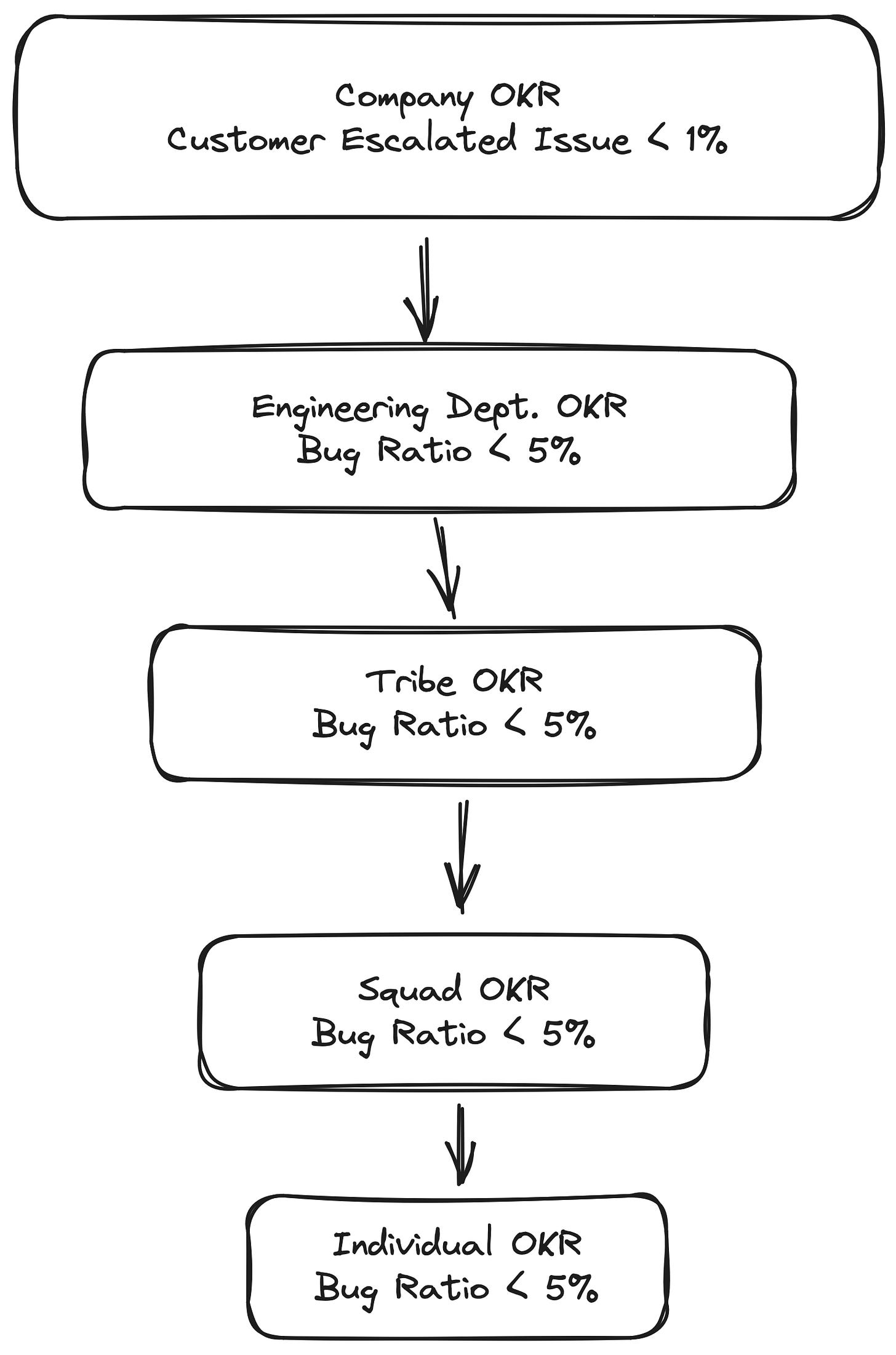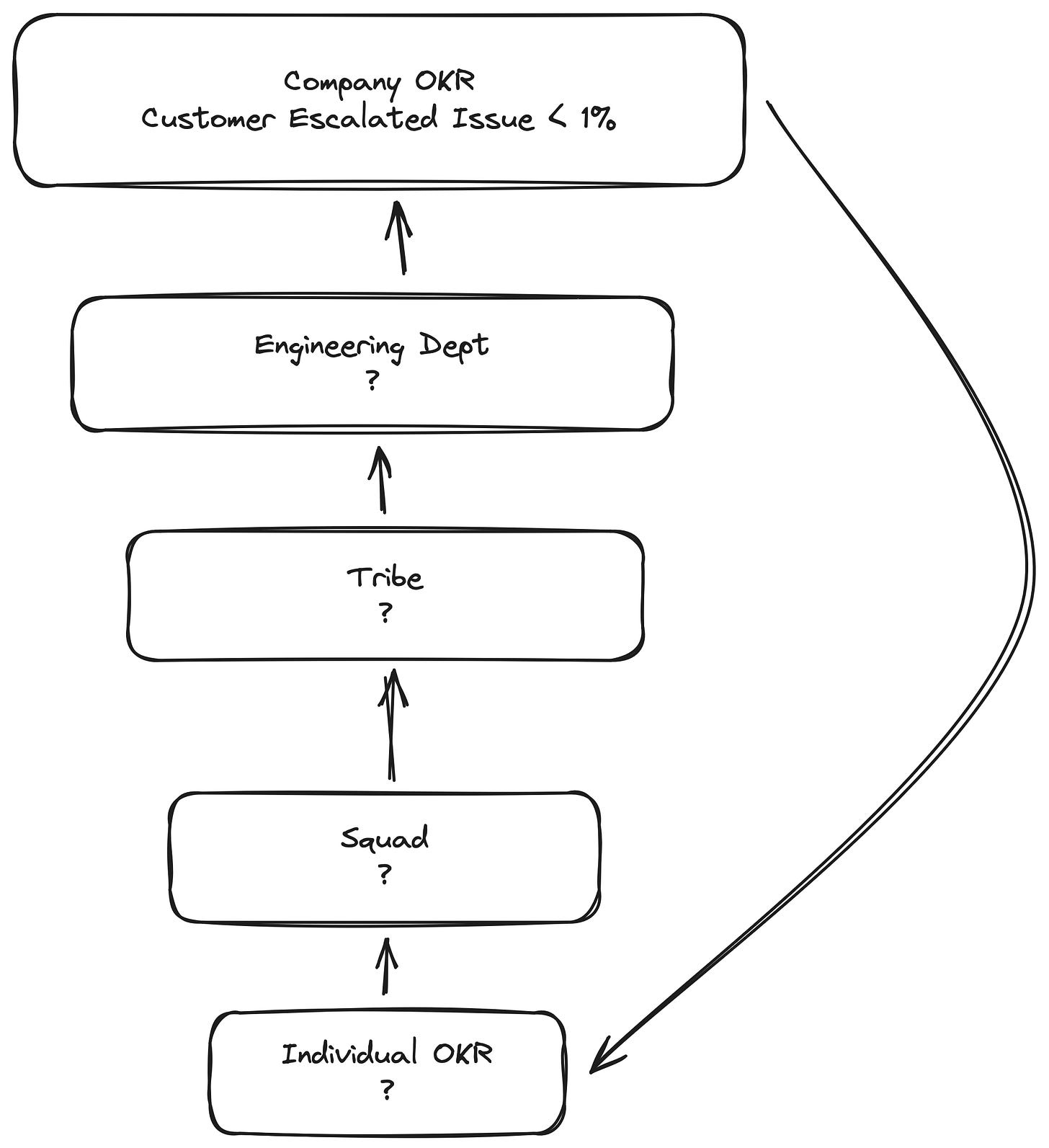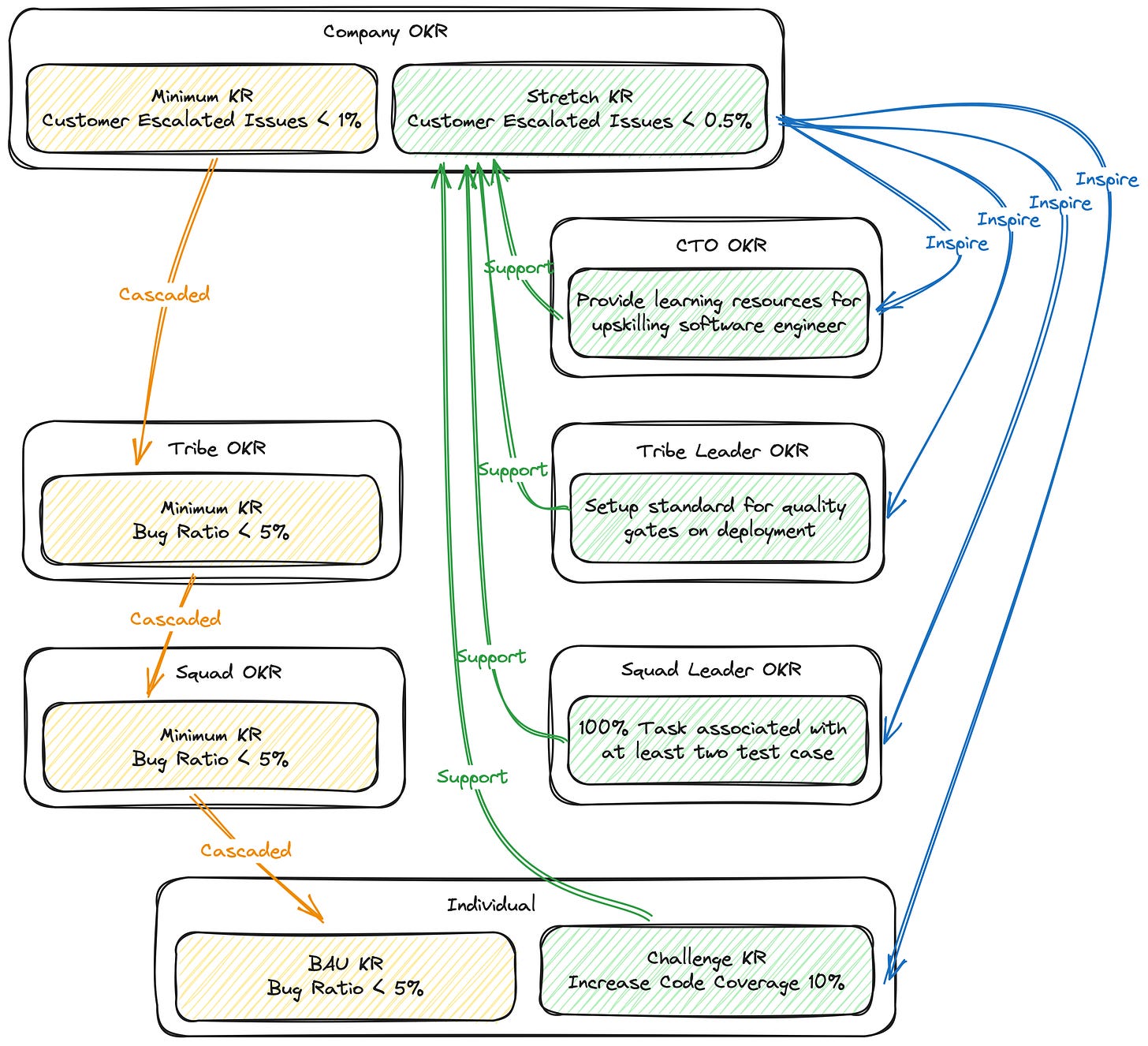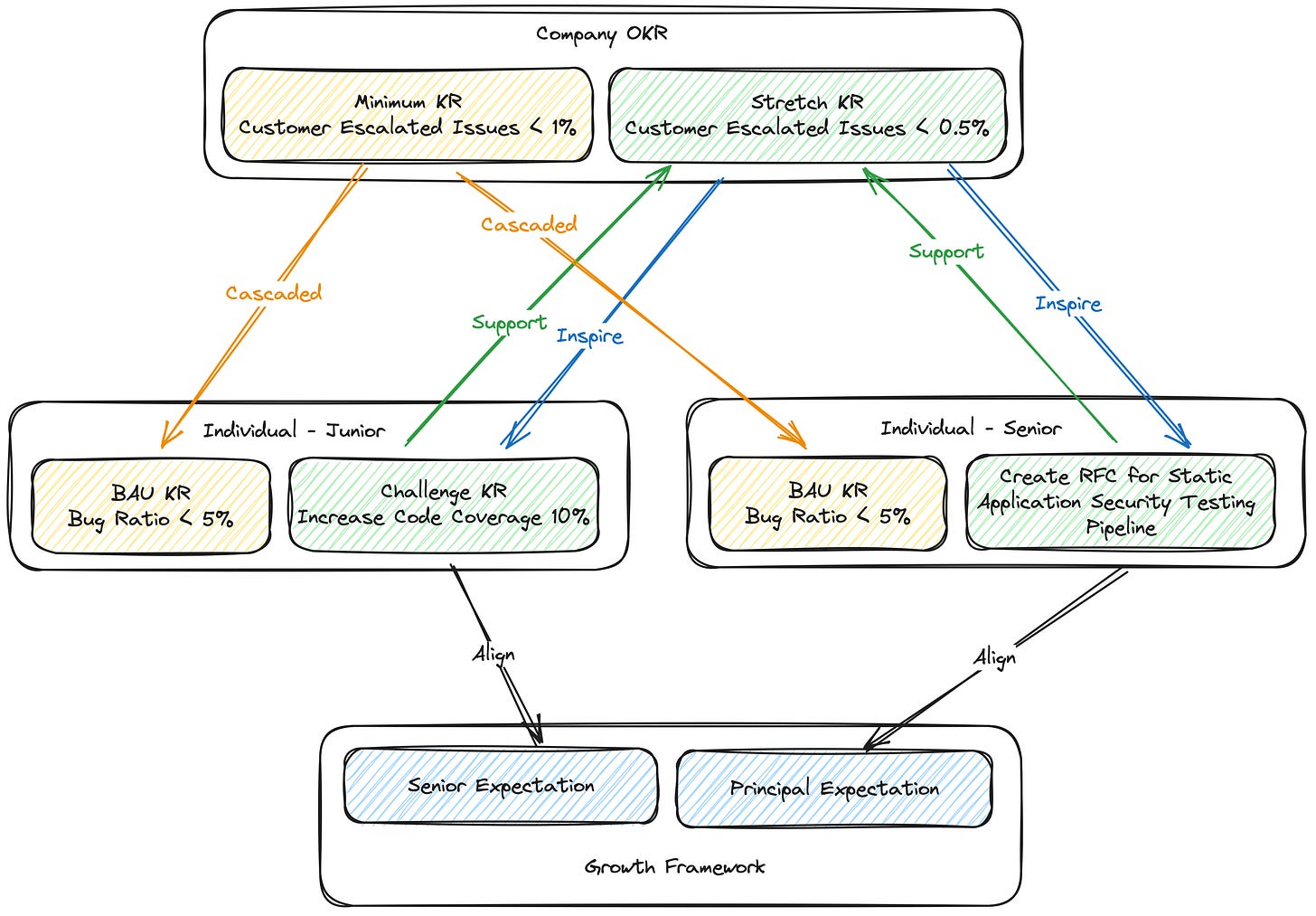A Better Company's OKR System for Individuals to Grow
OKRs are not just instruments for business growth, but they can also be utilized as performance management tools for people to grow their expertise.
It's known as Objective Key Results, or OKRs. The terms that you will always see in lots companies around the world. Simply said, the Objective Key Results specifies one or more goals that must be achieved by an individual (an employee), a team, a department, or even the whole company.
Companies feel that achieving OKRs, whether by an individual or a department, will help the company grow its business. There is also hope that applying OKRs will create an environment for individuals to improve because they have a goal to strive for, as well as making it easier for the organization to measure which individuals perform well and which do not.
In another word, companies also employ OKRs as one of their performance management tools. From there, you may determine which individuals are eligible for a bonus (or other incentives such as a raise or promotion) because they have met all of the OKRs targets, and which should be improved.
In small companies (less than 50 people), the notion that meeting individual’s OKRs leads to increased business growth has been proven. This is due to the fact that individual goals, which define OKRs, can be directly derived from company’s OKRs. If an individual meets their OKRs, it has a direct impact on the company's target. The role of an individual in a small company is also fairly broad, requiring them to expand their skills in order to meet their OKRs.
If not properly configured, the larger the organization, the more distorted the alignment of achievement between individual’s OKRs and company’s OKRs. Why? This is due to the fact that in large corporations, there are numerous layers between the company’s OKRs and the individual’s OKRs. Those layers are formed by the structure of the organization itself.
For example, if the company has multiple departments, each department will have its own OKRs. On each department, there may be multiple teams, each with their own OKRs. By having only two layers between the company and the individual, we have already introduced four types of OKR: company’s OKRs, department’s OKRs, team’s OKRs, and individual’s OKRs.
As the goal or target cascades into the lowest layer, the derived goal loses focus. The larger the company and its organizational structure, the deeper the layers, and the likelihood of losing focus and alignment at the individual level increases.
Bottom-Up is Hard
With this deep layers, OKRs should not be used as a cascade target from top to bottom. This is one of the mistakes that most companies make. We referred to it as Top-Down OKRs, in which the company sets a target, which is then cascaded to each individual through layers between them. Sure, it will align each layer and ensure that if an individual meets their OKRs target, it will benefit the company's business growth. However, this kind of approach will never inspire the individual to continue growing and expand their skill-set to the next level.
Top-Down will give individuals the impression that their OKRs is another slice of the company’s OKRs that has been assigned to them, and even if the target is met, the process achieving those targets will be delivered in the form of a shortcut. The reasoning goes like this: "Why would I go through a longer process if I could reach my goal faster and earn a higher salary or a bonus?" . Shortcuts always end in low quality, or worse, the individual is faking a result.
So, what happens now? The bottom-up approach appears to be ideal. The company established the OKRs, which was announced to all individuals, and they were required to create their own OKRs that supported the company's OKRs. It is rare for a company to accomplish this because the alignment required to ensure that each individual OKRs supports the company's OKRs appears to be a lengthy and difficult process.
How can we ensure that the individual’s OKRs is more than just a checkbox and actually contributes to the company's OKRs?
How can we ensure that individual’s OKR achievements justify salary increases or bonuses?
How are leaders' OKRs structured?
Expected vs Above and Beyond
Alignment is hard especially when dealing with things that are unique to each individual. So the aim is to separate the key results into two types: one that will label the individuals as meeting expectations. Let us refer to this type as Business as Usual Key Results (BAU KRs). The other type will recognize persons who go above and beyond their expectations. This might be referred to as the Challenge Key Results.
The separation of individual’s key results must be backed by the company's OKRs, which are similarly divided into two types: Minimum Key Results and Stretch Key Results. This implementation is similar to the stretch goal concept, with 70% achievement indicated as Minimum KRs and 100% achievement marked as Stretch KRs. For example, the company's Minimum KRs is to achieve a customer escalation rate of less than 1%, whereas the Stretch KRs is less than 0.5%.
The way it works is that the company's Minimum KRs are cascaded to the individual level in the form of BAU KRs, and then the company's Stretch KRs motivate individuals to set up Challenge KRs that support the company's Stretch KRs. Each individual, including the leaders, must have Challenge KRs. We can define the leaders' BAU KRs as the minimum KRs based on their scope. Squad leaders' BAU KRs are the squad's minimum KRs, but they must also develop Challenge KRs to support their squad's Stretch KRs. This applies to leaders at all levels, including the C-level.
BAU KRs could take the shape of a goal that is anticipated to be met on each individual level. This means that if there are junior employees, their BAU KRs must be consistent throughout the company. On the other hand, Challenge KRs can be anything as long as it benefits the company's Stretch KRs.
How do we measure the impact?
Individuals' BAU KRs is simple: they achieve their BAU KRs, which immediately supports the company's Minimum KRs. If an individual does not meet their BAU KRs, we can mark them as not meeting expectations and assign them to the performance improvement plan.
The Challenge KRs are a little complicated because they can take any form as long as it is consistent with the company's Stretch KR. Assume a senior software engineer has selected "Write 10 unit tests" as their Challenge KR. Sure, it benefits the firm Stretch KR, but is it challenging for them? Is it driving them towards the above expectations? How do we measure it? This is why we need a Growth Framework.
Path to The Stars
Challenge KRs should be sufficiently challenging for individuals to demonstrate that completing this type of KR will have an influence on the individual where they noted as the above expectation. As a result, a guideline must be developed. It's known as the Growth Framework.
Companies that truly value their employees as valuable assets must have a Growth Framework, which serves as a guide for determining what individuals must achieve to advance to the next level. What are the expected tasks of a senior software engineer, so that juniors can set goals for themselves and when they fulfill them, they can advance to the senior level. Without a growth framework, it is difficult for individuals to grow since there is no path to the stars.
The growth framework will assist the organization in resolving Challenge KRs issues. It solves by bringing the key results up to the standard of the next level individual. In the growth framework, the higher the level, the broader the scope of the individual's responsibilities. So there will be no more "Write 10 unit tests" as a Challenge KR for a senior software engineer, and it should be something that will help them above expectations when completed.
Okay, now everything is apparent, and you can apply this to your company. In the following six months, you will conduct performance appraisals using this schema to choose individuals who perform below and above expectations. Gossip arises. According to hearsay, certain leaders in your company select the wrong people as the ones who perform above expectations when they are not. What happens now?
Transparent as Glass
Anything can become subjective if people aren't supplied with facts. When appraisals take place behind closed doors with no visibility for each individual to see how they rank against one another, gossip will emerge, even if the internal procedure is carried out objectively. Politics rises. People believe that in order to rise to the top, you must just be liked by the leaders, rather than merit or effort. If you allow this state to persist for more than one cycle, the best individuals will leave. Those who remain on the inside will do whatever it takes to maintain their position. Metrics are being fabricated. From the outside, everything appears to be in order, but the company is on the verge of ruin within the next month.
This scenario occurs in many companies, including yours. To combat this politics and subjectivity, we must bring objective facts and transparency to the table. You must ensure that any important results assigned to each individual are clear and visible to anybody in the company. When you have this environment, people will assist you undertake self-correction on one another. The question "How did my teammate from the same level as me get this number?" will surface. It will oblige you to include the verifiable fact for each number that the individual entered in their key result. Transparency will be ineffective without proved numbers.
Believe it or not, having these two items, transparency and verifiable key result numbers, will make it easy for the leader to choose the one with the highest and lowest performance. Individuals will self-recognize if they are at the bottom because they can see the number on their colleagues' crucial results. Transparency will also provide individuals with new aspirations on how to go beyond the growth framework that has been established, by allowing them to see the key results of those who are above their level.
What level of transparency should be maintained?
How can we protect the number, which is intended to be a company secret?
I would argue that everyone in the company should be able to see everyone's OKR, including the C-level executive. This is because it offers everyone a sense of direction for the company and inspires individuals to improve as they see the C-level grow on an individual basis. Of course, this has an impact on each individual's sense of ownership for the organization. However, if this is too extreme for you, you can begin siloing the transparency to a single layer down, such as the tribe or department level, as long as the individual can compare themselves to colleagues with the same level and job description.
Now is The Right Time
That's all I'd like to say for now. There are many things in this essay that I have purposefully simplified to ensure that we understand the fundamentals and core concept of how the OKRs should be. In the future, I plan to investigate more specifics such as the growth framework, monitoring OKR progress, and so on.
I also recommend that you attempt the approach that I provide here since I believe it will considerably assist you in overseeing the performance of the company and its employees. If you have any input or concerns about this suggestion, please let me know in the comments.







